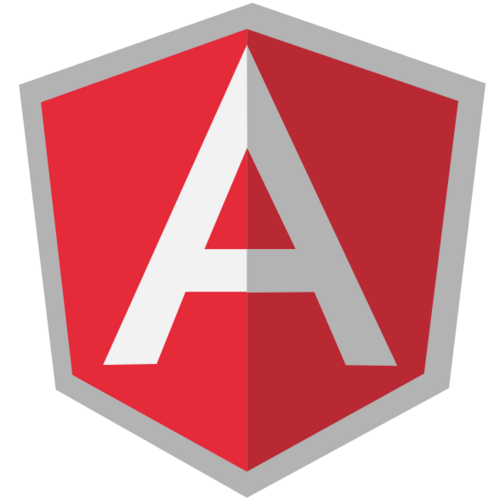Real-time eye candy with AngularJS
FITC Toronto, December 2013
By Matias Niemelä
@yearofmoo
Eight major AngularJS articles.
Great resource to learn about AngularJS.
Link to Slides
I am here to ...
Talk about Real-time web applications
How to integrate Real-time features
Explain that AngularJS is the right tool for the job
Show how to master the UI of your real-time application
Briefly talk about testing and maintainable code
AngularJS

An amazing framework for building dynamic web interfaces
Runs in the browser not on the server
But your backend can be anything
Does this ring a bell?
Let's do a quick example
Web(sites|apps) & Real-time Apps?
Traditional websites -- little or no AJAX here
AJAX web applications -- SPA applications
Fully Real-time applications -- WebSockets
But what about a mixture of all three?
As the web gets better...
Content renders on screen faster and seamlessly
Easier and easier to make websites dynamic
More control over what changes and what stays
But...
As a result...
More AJAX === a more instantaneous expectation
The gap between expired and instant becomes smaller and smaller
users will eventually expect applications to be fully real-time
So webapps should not require the user to refresh the page anymore
Does the page update when the user walks away from the screen?
Why do we really need a refresh button?
So how does this work?
Hook into the hashbang/pushState URL change
Figure out what page to download
Update the body of the page
Perform a fancy animation
AngularJS FTW!
The best of both worlds (hybrid web applications)
Use AJAX from the start (standard SPA application)
Then apply real-time effects as you go?
What is the first problem that comes to mind?
Lets try and make something
Lets try and use pusher.js to update a page
Problems you can run into
Update collisions between AJAX data and Real-time data
Dependency issues
Disorganized Code
Problematic or absence of testing ... How do we test this?
So what are these hybrid applications?
Standard SPA/Traditional websites primarily
Uses WebSockets (a real-time connection) to enhance the experience
Gracefully degrade for older browsers
Kind of like a mobile first approach to making real-time applications
You don’t need to make the entire website using a real-time backend
Great examples of hybrid applications
Github (PR pages)
Asana (tasks)
Facebook (chat)
Our demo application...
Why AngularJS for a real-time web application?
The scoping system allows for an easy way to update data
Directives & Expressions can update the DOM as the data changes
Animations can make it look nice
AngularJS can work with a non-angular application
How does this work?
Bindings, directives and expressions listen on the scope
The scope is your in-memory database
Place AJAX and/or real-time data into the scope
The page updates, renders and animates
Let's use AngularJS instead on our previous example
Lets try and use pusher.js
With angular.js
To make a Real-time application
Types of real-time connections
Native WebSockets
Socket.io (code wrapper)
Pusher.js (streaming service)
Firebase (full backend service)
What code are we using?
Grunt, NPM + Bower
Karma with Jasmine (unit testing)
Protractor (end to end testing)
AngularJS 1.2 (ngRoute + ngAnimate)
Pusher.js
What about the backend?
A simple Rails app to manage the admin
JBuilder for the API
RailsAdmin for a pre-made admin
Whenever the model changes, upload to pusher
Let's Explore the application
Simple crud application that uses AngularJS and an API
Routes, pages, views and styles
Users, comments, images and more
Nice, clean JavaScript code
Let's make it "Real-time"
Real-time effects update the page as things change
The user instantly knows when something has changed or been added
Animations enhance the experience...
From Pusher to AngularJS
Just add the data to the scope
$http.get(API_PATH + '/users?limit=18')
.success(function(data) {
$scope.users = data.users;
});
userChannel.bind('create', function(user) {
$scope.$apply(function() {
$scope.users.unshift(user);
});
});
userChannel.bind('destroy', function(user) {
$scope.$apply(function() {
$scope.users = modifyCollection($scope.users, user, 'destroy');
});
});
Then display the contents as normal
The template doesn't care where the data comes from
![]()
Animations in AngularJS
Use angular-animate.js with 1.2
Include the ngAnimate module
Supports CSS3 Transitions / Keyframe animations
Supports JS callback animations
Let's examine some animations in the app
CSS Code
Include ngAnimate to make this work
.animate-listing {
transition:0.2s linear all;
}
.animate-listing.ng-enter { /* enter from */ }
.animate-listing.ng-enter.ng-enter-active { /* enter to */ }
.animate-listing.ng-leave { /* leave from */ }
.animate-listing.ng-leave.ng-leave-active { /* leave to */ }
Staggering Animations
Brand new feature with 1.2
.animate-listing.ng-leave-stagger,
.animate-listing.ng-enter-stagger {
/* sets the delay between each item */
transition-delay:0.05s;
-webkit-transition-delay:0.05s;
/* these need to be placed here as well */
transition-duration:0;
-webkit-transition-duration:0;
}
Let's do some unit testing
Jasmine tests the JavaScript code
angular-mocks.js provides mocking support
Karma runs the tests on all browsers
Let's do some integration testing
What is Protractor?
How does it work?
What can you test with it?
Let's test it out
Thank you!
Thank you for making this possible
Feel free to contact me via [email protected]